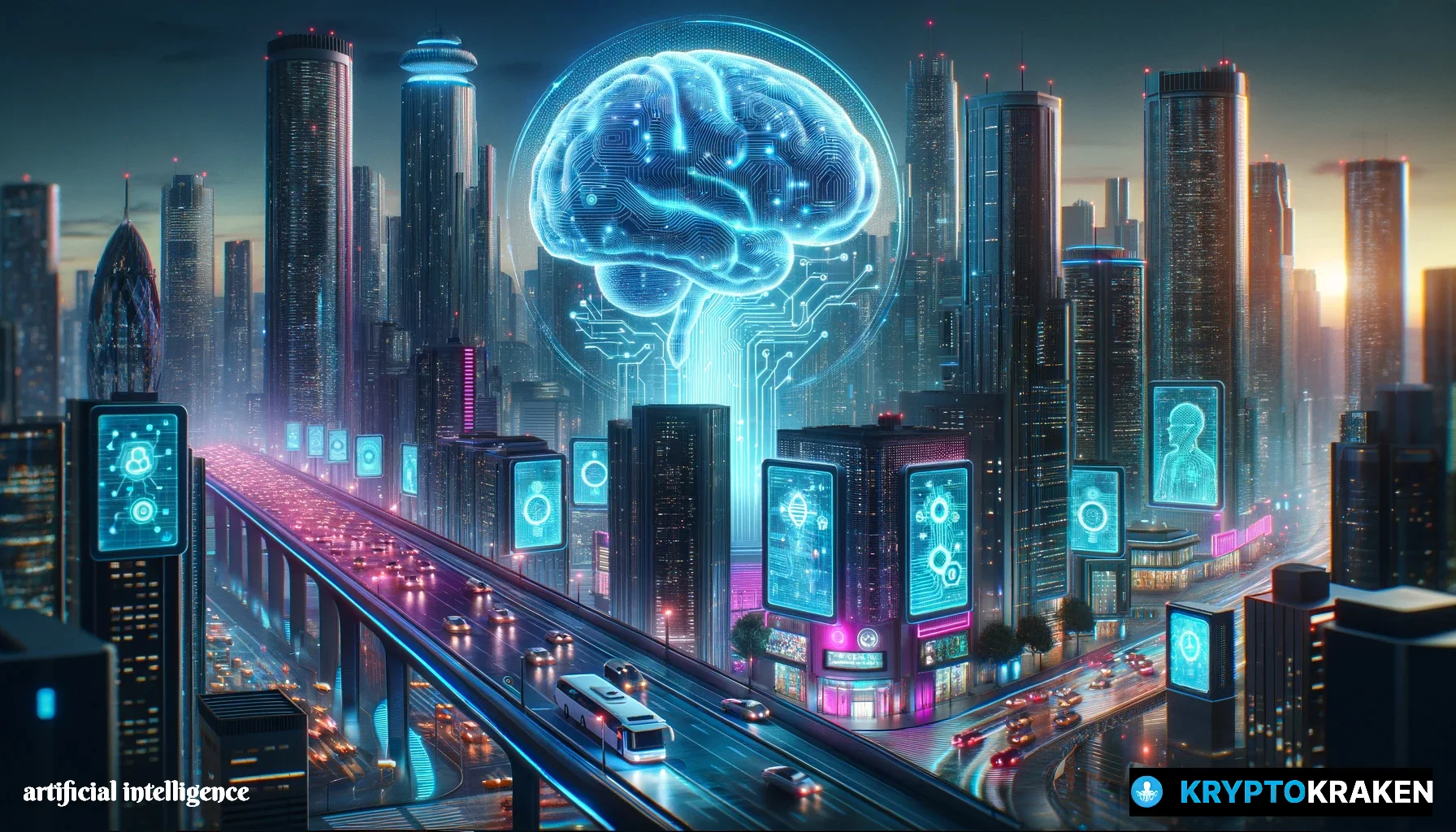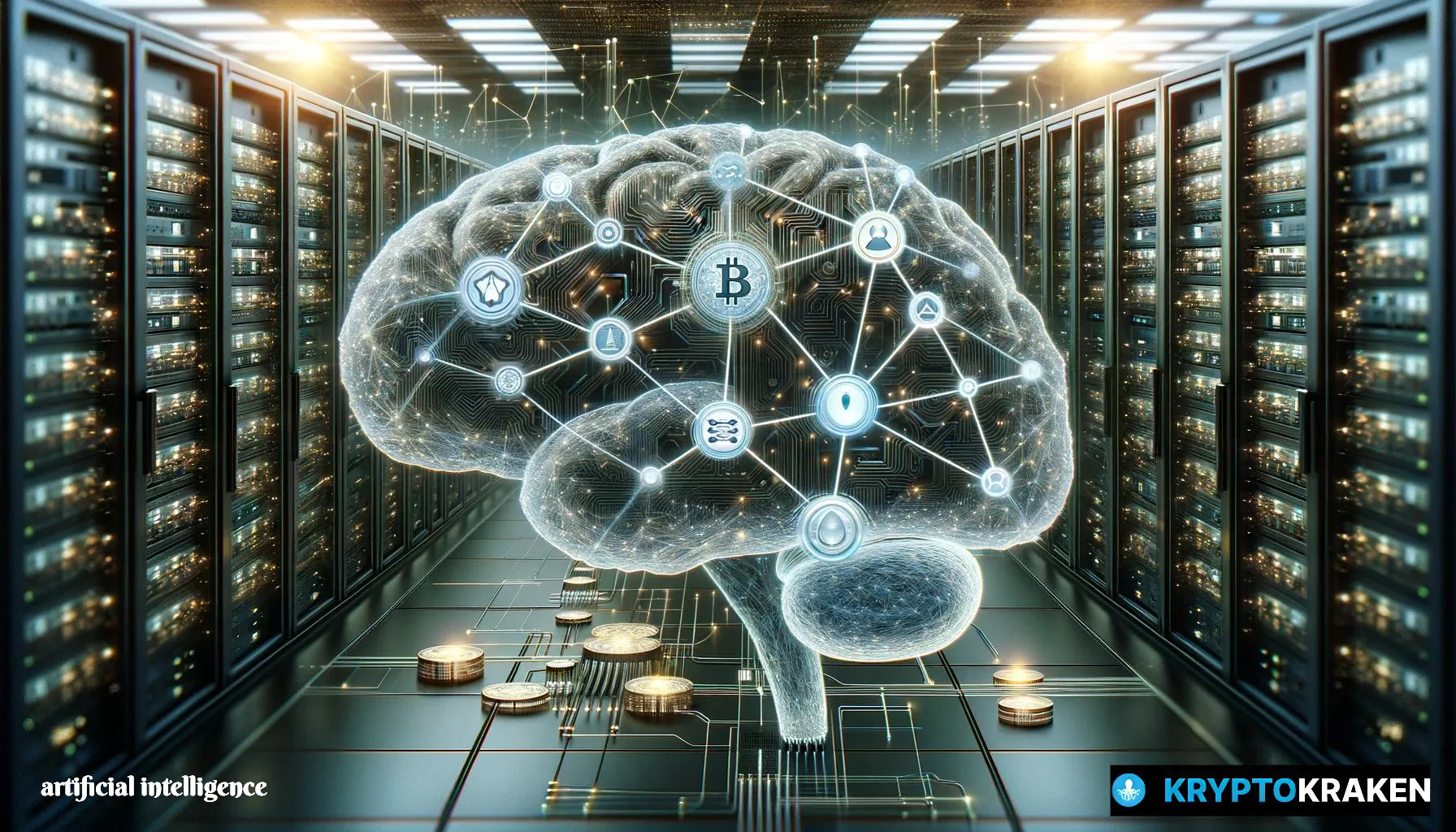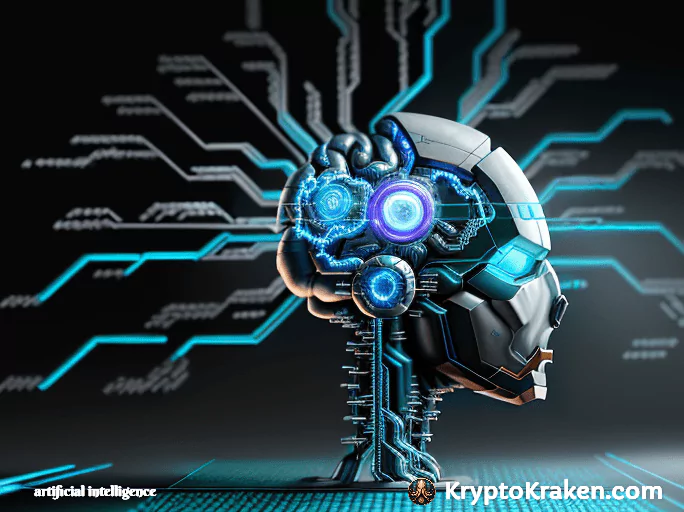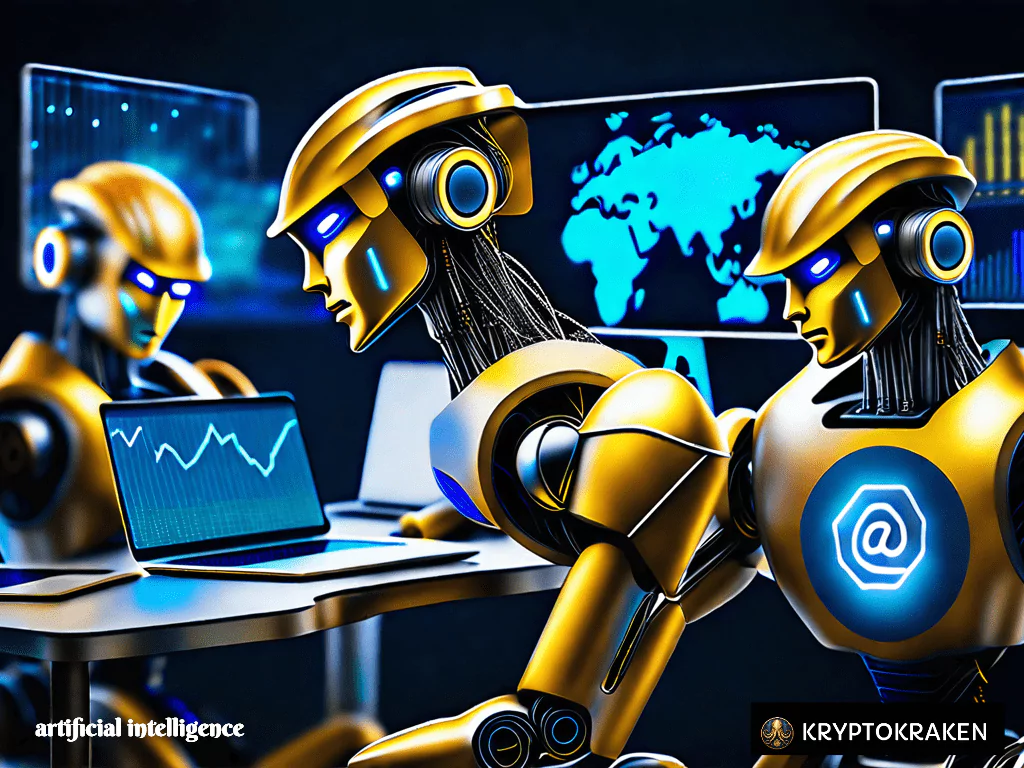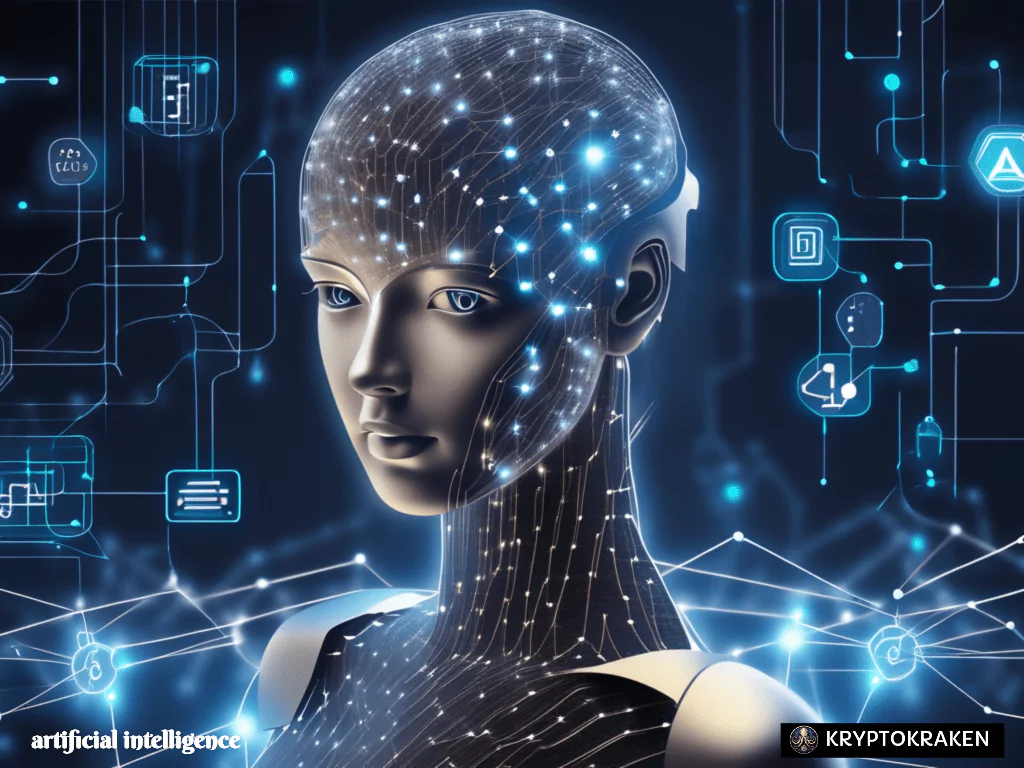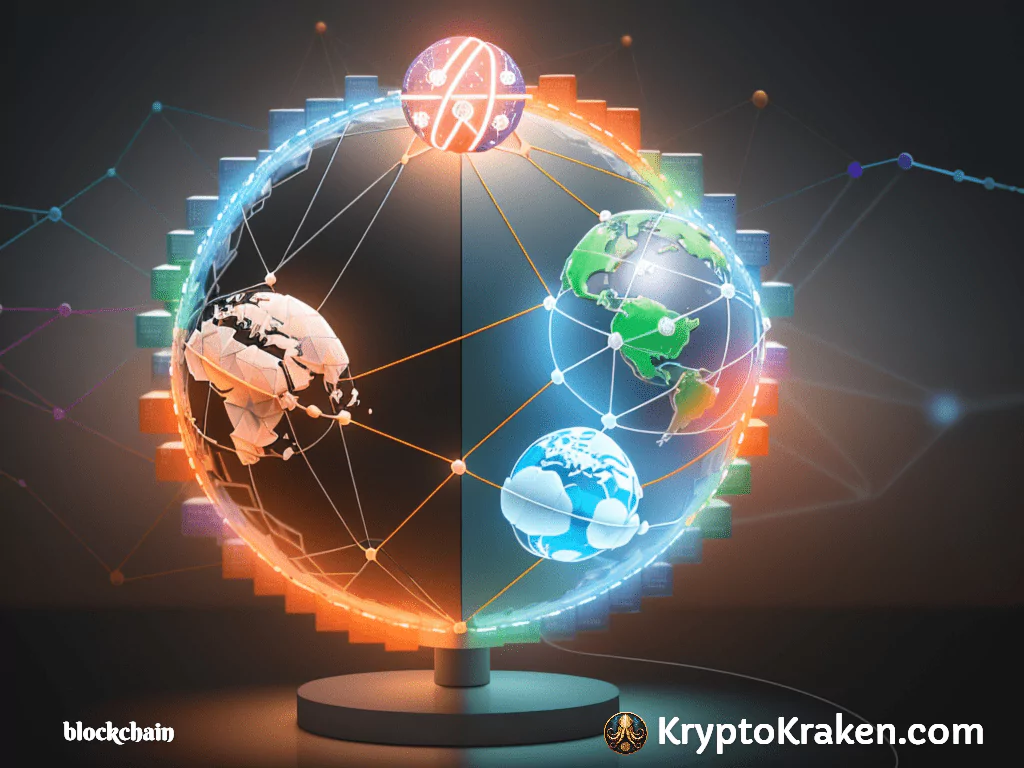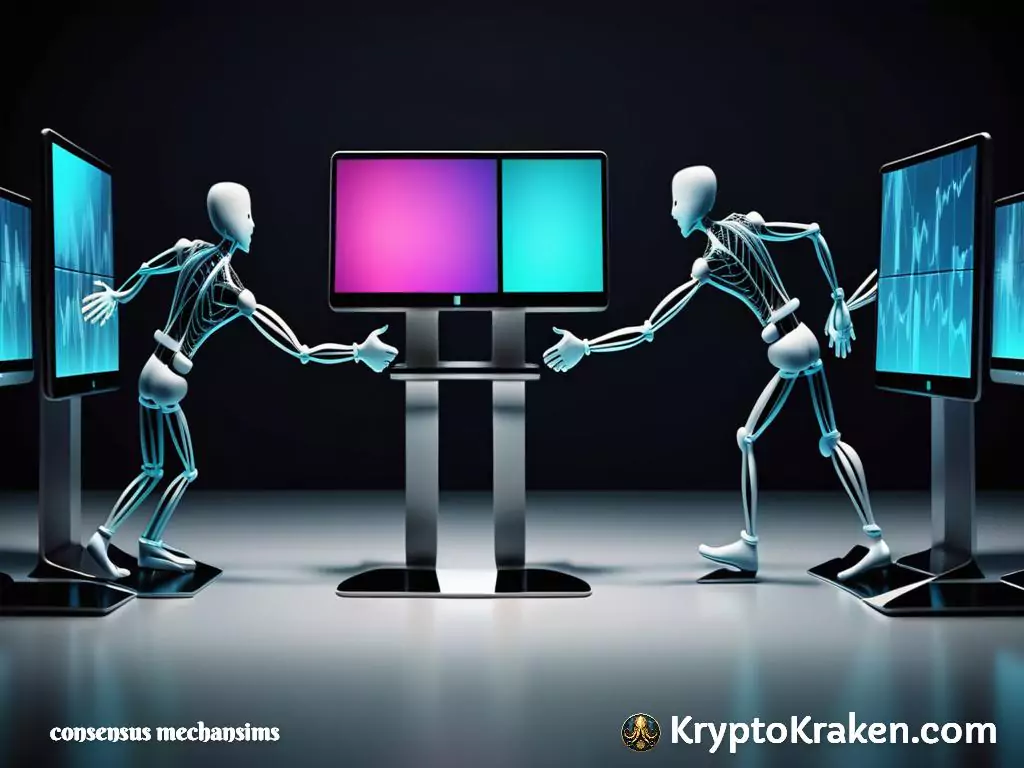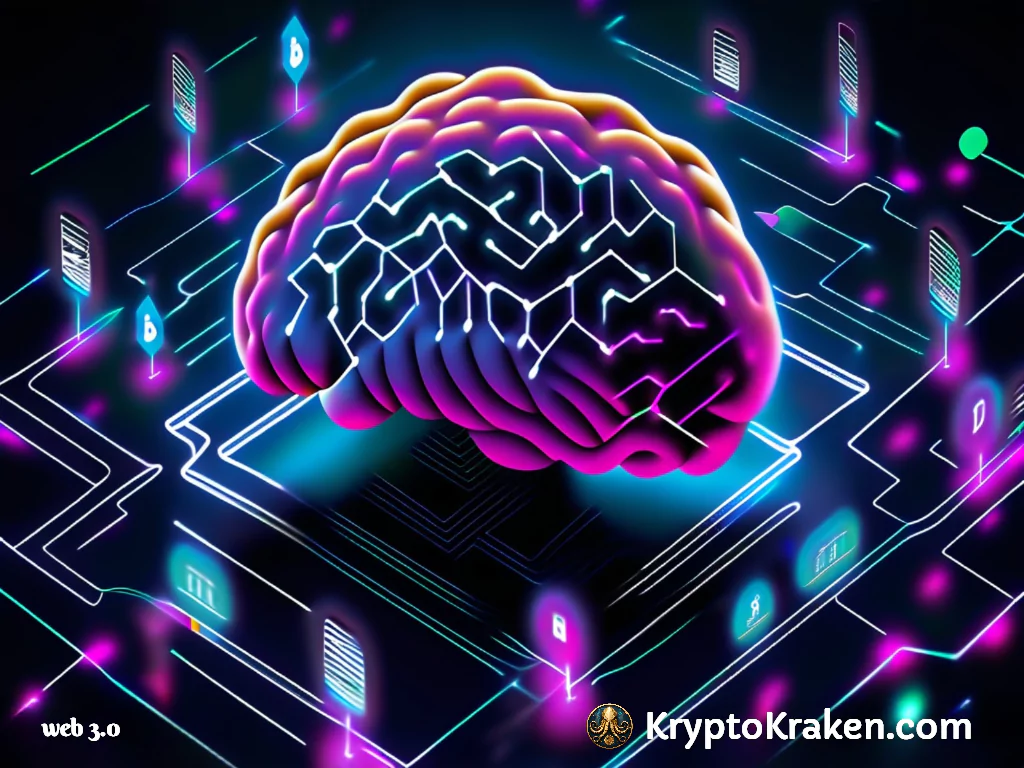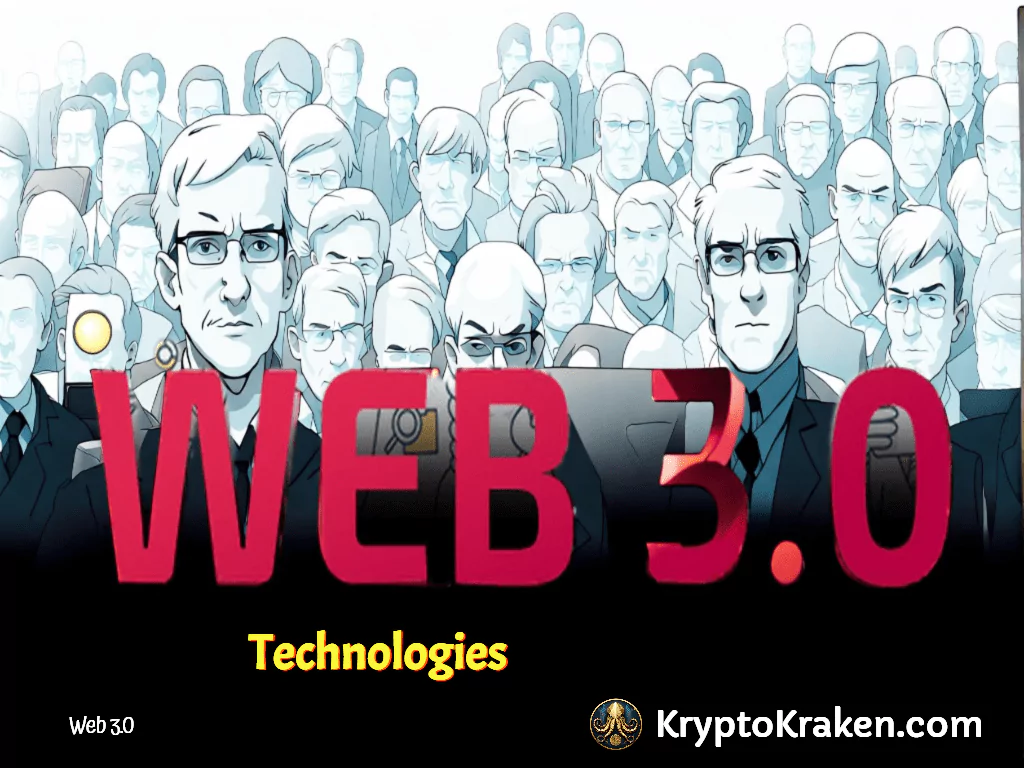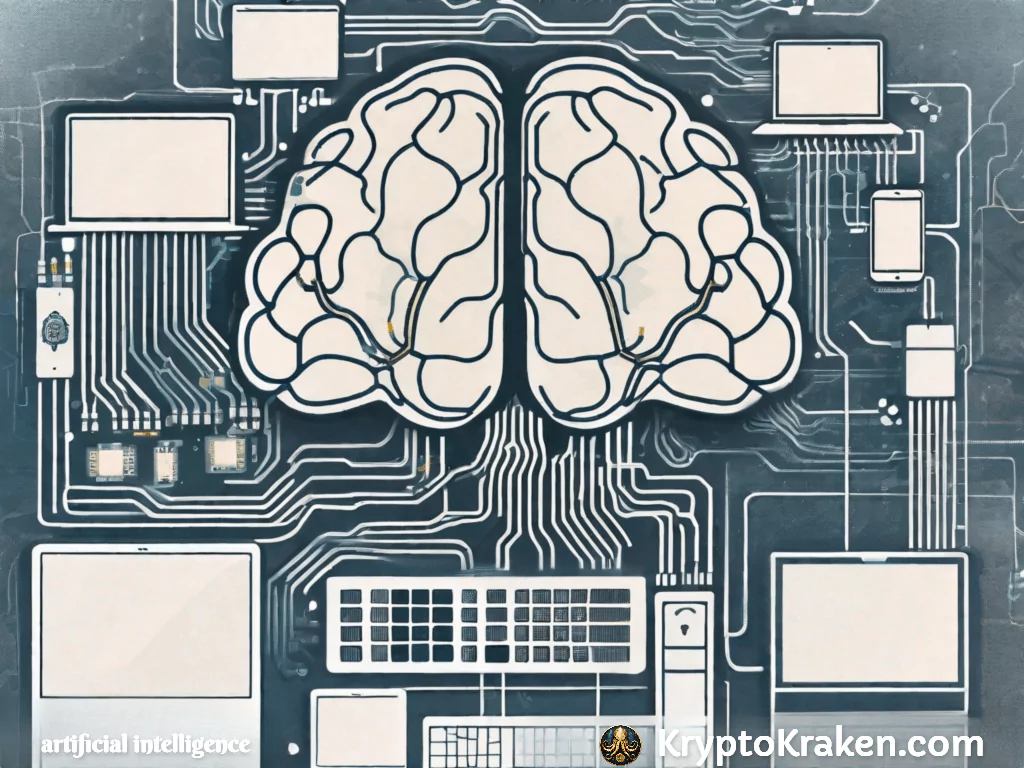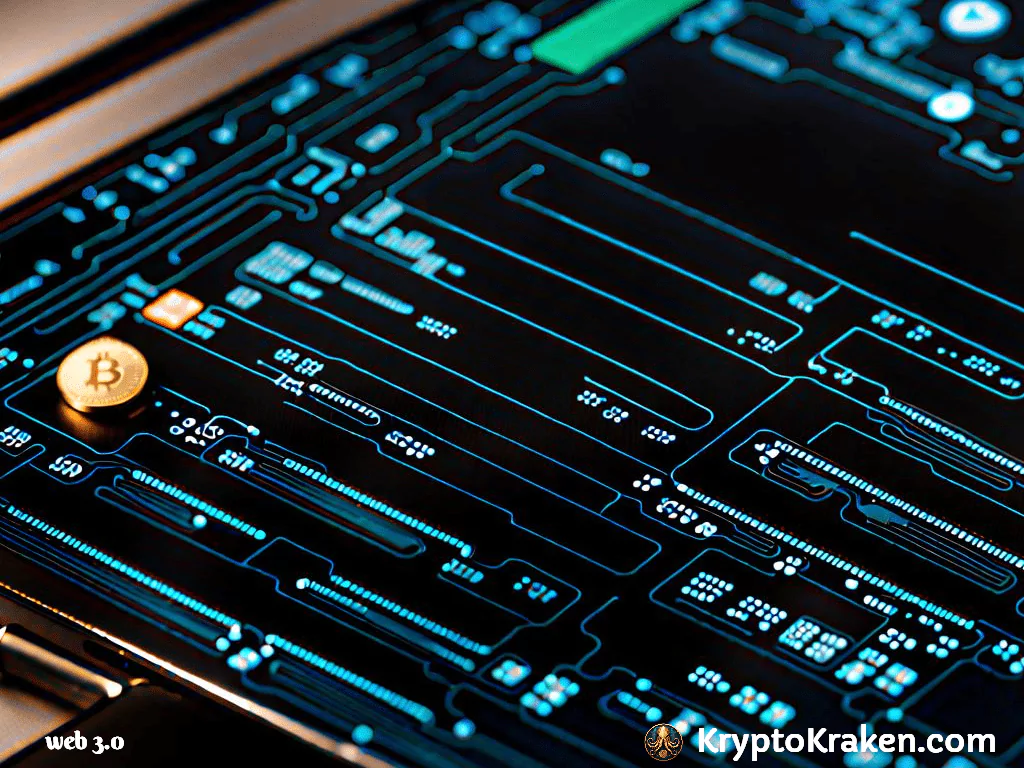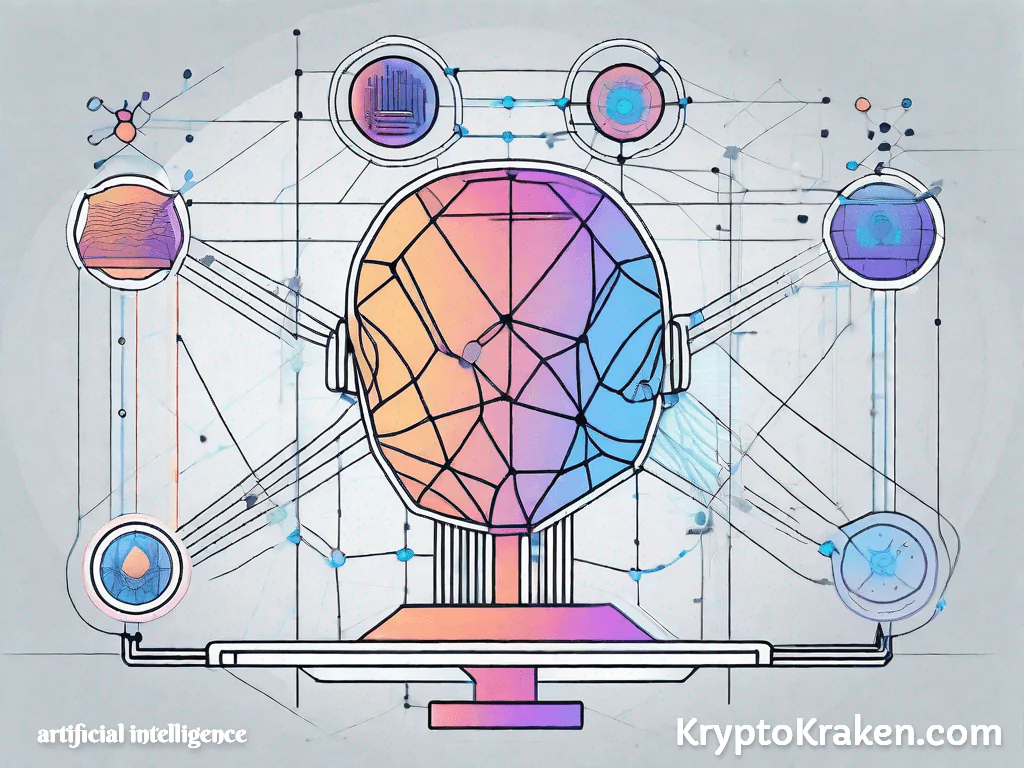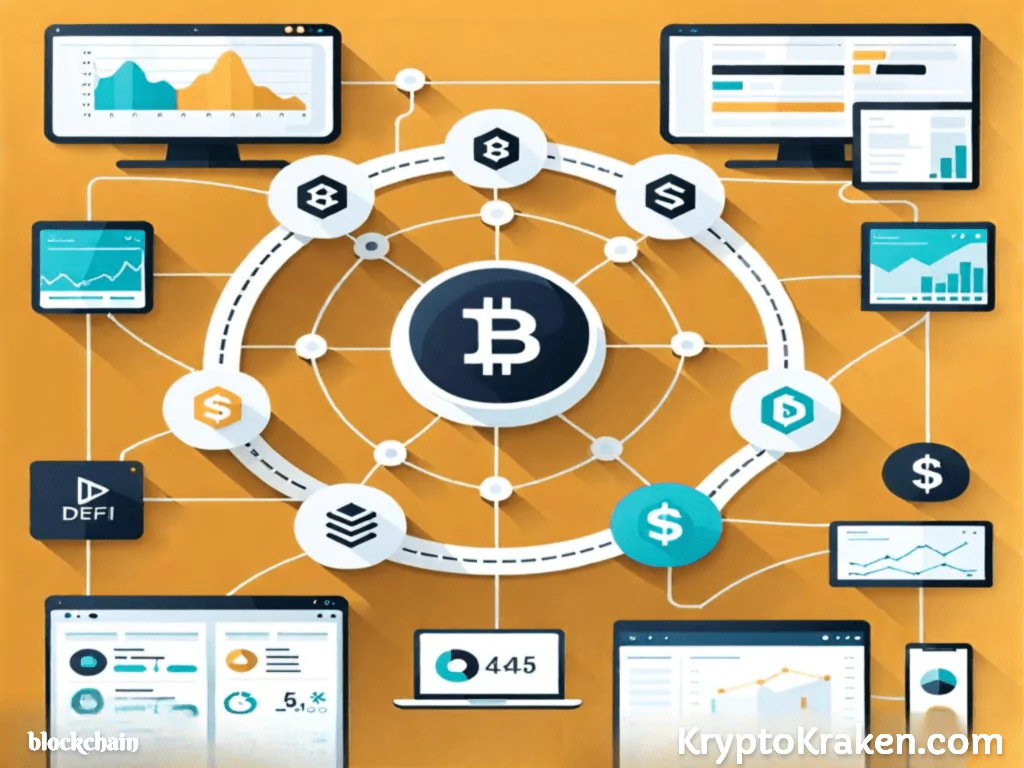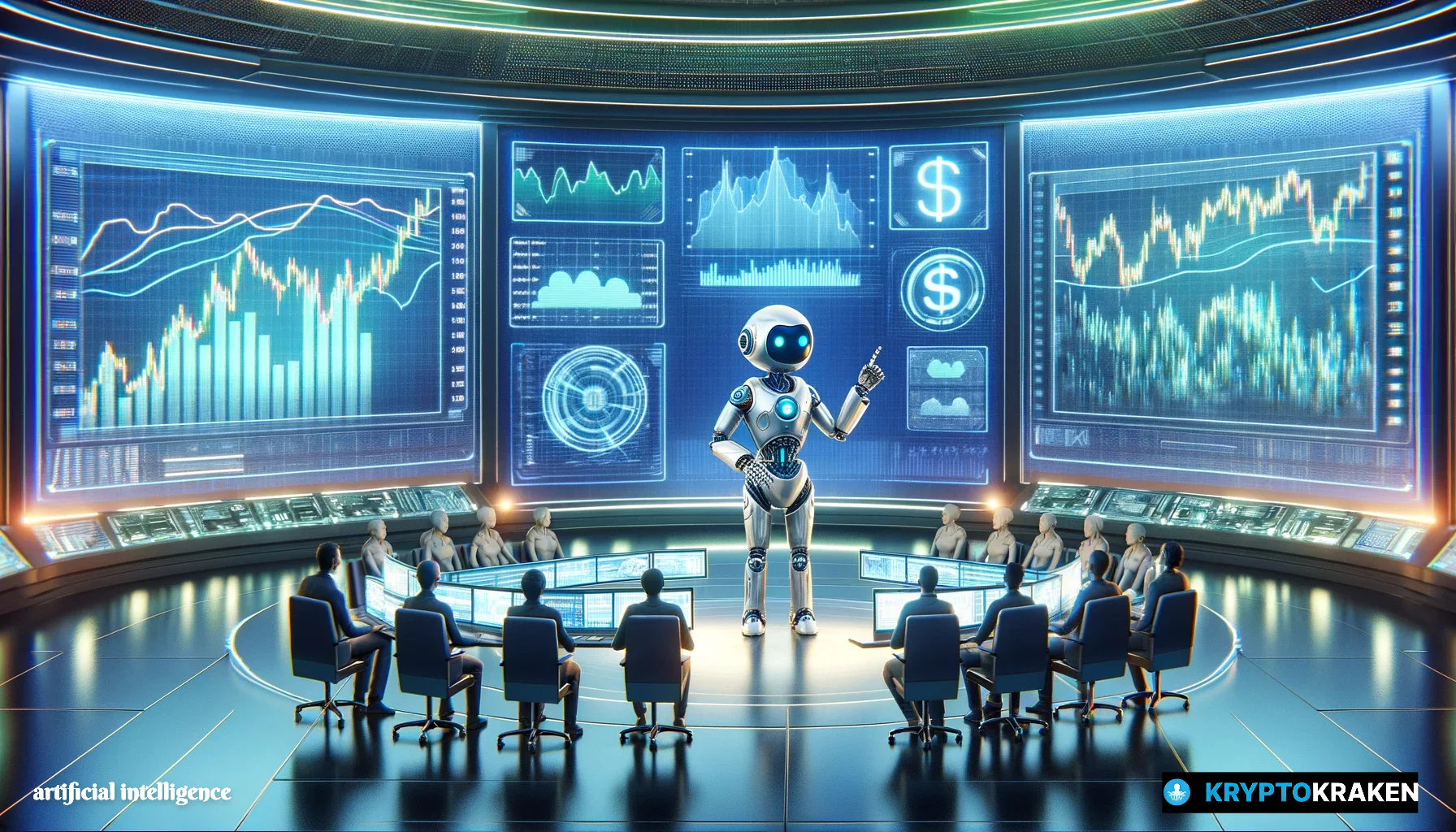
- November 27, 2023
- Carol Thomas
- 0

Today, the world of trading is being revolutionized by advancements in artificial intelligence (AI) and machine learning. With the rise of AI trading bots, even beginners can now tap into the world of automated trading and potentially profit from the markets. In this comprehensive guide, Ai Trading Bots for Beginners, we will take a deep dive into the world of AI trading bots and explore how you can get started on your journey to becoming a successful trader.
“I know you will find this article to be jammed-packed with vital information for anyone wanting to learn about AI Trading Bots for Beginners” -Dennis
Table of Contents
Introduction to AI and Machine Learning
Before we dive into the specifics of AI trading bots, it’s crucial to understand the underlying technologies that power them. AI, in simple terms, refers to the ability of machines to mimic human intelligence and learn from data. Machine learning, on the other hand, is a subset of AI that focuses on training machines to automatically analyze and interpret data, thereby improving their performance over time. In the context of trading, AI and machine learning algorithms can identify patterns and make data-driven decisions to execute trades. “I Know you will find this article useful and jammed-packed with vital information about Ai Trading Bots for Beginners”
To fully grasp the potential of AI trading bots, it’s essential to familiarize yourself with the basic principles of trading. Understanding fundamental concepts such as supply and demand, market trends, and risk management will provide you with a solid foundation to build upon. While AI trading bots can automate the execution of trades, having a comprehensive understanding of these concepts will help you make informed decisions and maximize your profits.
Supply and demand are two fundamental forces that drive the financial markets. Supply refers to the quantity of a particular asset available for sale, while demand represents the desire of buyers to purchase that asset. When supply exceeds demand, prices tend to decrease, and when demand exceeds supply, prices tend to increase. This interplay between supply and demand creates opportunities for traders to profit by buying low and selling high.
Market trends are another crucial aspect to consider when trading. A market trend refers to the general direction in which the prices of assets are moving over a given period. Trends can be classified as either bullish (upward), bearish (downward), or sideways (horizontal). Recognizing and understanding market trends can help traders make more accurate predictions about future price movements and adjust their trading strategies accordingly.

Risk management is an integral part of successful trading. It involves identifying and assessing potential risks associated with a trade and implementing strategies to mitigate those risks. Traders use various risk management techniques, such as setting stop-loss orders to limit potential losses, diversifying their portfolios to spread risk, and using leverage responsibly. By effectively managing risk, traders can protect their capital and minimize the impact of adverse market movements.
Now that we have covered the basic principles of trading, let’s delve deeper into the role of AI and machine learning in the world of finance. AI trading bots leverage advanced algorithms and statistical models to analyze vast amounts of data and identify patterns that may not be apparent to human traders. These bots can process information from multiple sources, including news articles, social media, and financial reports, to make data-driven decisions in real-time.
Machine learning plays a crucial role in the development of AI trading bots. By training on historical market data, machine learning algorithms can learn from past trends and patterns to make predictions about future market movements. These algorithms can adapt and improve their performance over time, continuously refining their strategies based on new data. This ability to learn and evolve makes AI trading bots powerful tools for traders looking to gain a competitive edge in the financial markets.
In conclusion, AI and machine learning are revolutionizing the world of trading. AI trading bots can automate the execution of trades and make data-driven decisions based on complex algorithms and statistical models. However, it’s important to remember that while AI trading bots can enhance trading efficiency, having a solid understanding of trading principles and risk management is still essential for success. By combining the power of AI with a comprehensive knowledge of the market, traders can maximize their profits and stay ahead in an ever-evolving financial landscape.
Essential Trading Knowledge
To truly harness the power of AI trading bots, it’s crucial to have a deep understanding of the financial markets. This knowledge will enable you to identify trading opportunities and effectively manage your portfolio. By familiarizing yourself with various asset classes, such as stocks, bonds, commodities, and cryptocurrencies, you’ll be able to make informed decisions based on market conditions and economic indicators.
When it comes to stocks, it’s important to understand the different sectors and industries within the stock market. Each sector has its own unique characteristics and can be influenced by various factors such as economic trends, government policies, and technological advancements. By staying updated on the latest news and developments in these sectors, you can identify potential investment opportunities and adjust your trading strategies accordingly.
Similarly, bonds play a significant role in the financial markets. Understanding how bonds work, including their different types and risk profiles, can help you diversify your portfolio and manage risk. Bonds are often considered less volatile than stocks and can provide a stable source of income through interest payments. By analyzing factors such as interest rates, credit ratings, and bond yields, you can make informed decisions when investing in bonds.

Commodities, on the other hand, include tangible assets such as gold, oil, and agricultural products. These assets are influenced by supply and demand dynamics, geopolitical events, and global economic trends. By understanding the factors that drive commodity prices, you can identify trading opportunities and hedge against inflation or other economic uncertainties.
In recent years, cryptocurrencies have gained significant attention in the financial markets. These digital assets, such as Bitcoin and Ethereum, operate on blockchain technology and offer unique investment opportunities. Understanding the underlying technology, market trends, and regulatory developments surrounding cryptocurrencies is crucial for successful trading in this emerging asset class.

The Role of Technical Analysis
Technical analysis is a widely used method for evaluating past market data to predict future price movements. Familiarize yourself with concepts such as support and resistance levels, chart patterns, and indicators to enhance your decision-making process. While AI trading bots can perform technical analysis automatically, having a solid understanding of these concepts will enable you to fine-tune and customize your bot’s strategies.
Support and resistance levels are key areas on a price chart where buying and selling pressure is concentrated. By identifying these levels, traders can anticipate potential price reversals or breakouts. Chart patterns, such as triangles, head and shoulders, and double tops, provide visual representations of market sentiment and can help traders make predictions about future price movements.
Indicators, on the other hand, are mathematical calculations based on historical price and volume data. They help traders identify trends, momentum, and overbought or oversold conditions in the market. Commonly used indicators include moving averages, relative strength index (RSI), and stochastic oscillator. By combining different indicators and analyzing their signals, traders can make more informed trading decisions.
Risk Management Strategies
One essential aspect of trading that beginners often overlook is risk management. Developing strategies to minimize potential losses is crucial to long-term success. Understand concepts such as stop-loss orders, position sizing, and diversification to protect your capital and minimize risk.
A stop-loss order is an instruction to sell a security when it reaches a certain price level. It helps traders limit their losses by automatically exiting a trade if the price moves against their expectations. Position sizing, on the other hand, refers to determining the appropriate amount of capital to allocate to each trade. By carefully managing position sizes, traders can control their risk exposure and avoid excessive losses.
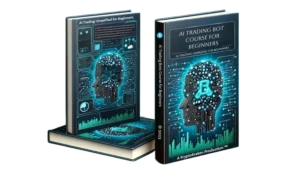
Diversification is another important risk management strategy. By spreading your investments across different asset classes, sectors, and geographical regions, you can reduce the impact of any single investment on your overall portfolio. Diversification helps mitigate the risk of significant losses and provides opportunities for potential gains in different market conditions.
In conclusion, to effectively utilize AI trading bots, it’s essential to have a deep understanding of the financial markets. By familiarizing yourself with various asset classes, mastering technical analysis, and implementing risk management strategies, you can optimize your trading performance and increase your chances of long-term success.
Programming for AI Trading Bots

To develop and customize your own AI trading bot, it’s important to have a basic understanding of programming languages such as Python or R. These languages are commonly used in the AI and machine learning community and offer a wide range of libraries and frameworks specifically designed for trading applications. By learning the basics of coding, you’ll have the flexibility to implement and fine-tune your trading strategies.
When it comes to programming AI trading bots, Python is often the language of choice due to its simplicity and extensive libraries. Python’s libraries, such as NumPy, Pandas, and Scikit-learn, provide powerful tools for data analysis, manipulation, and machine learning algorithms. With Python, you can easily access historical market data, perform technical analysis, and build predictive models to make informed trading decisions.
R, on the other hand, is a language widely used in statistical computing and data analysis. Its extensive collection of packages, such as quantmod, TTR, and xts, make it a popular choice for developing trading strategies. R’s statistical capabilities allow for advanced data analysis and modeling, making it suitable for traders who heavily rely on statistical indicators and quantitative methods.
Moreover, it is essential to master the API (Application Programming Interface) usage of trading platforms or exchanges. APIs enable seamless communication between your trading bot and the platform, allowing you to execute trades, retrieve real-time market data, and monitor your portfolio. Understanding APIs will enable you to take full advantage of the functionalities and data offered by the trading platforms.
Trading platforms and exchanges provide APIs with various functionalities, such as placing orders, retrieving account information, and accessing historical and real-time market data. These APIs often come with extensive documentation and examples to help you get started. By familiarizing yourself with the API documentation, you can understand the available endpoints, request parameters, and response formats, enabling you to integrate your trading bot seamlessly with the platform.
Furthermore, some trading platforms offer SDKs (Software Development Kits) that provide additional tools and resources to simplify the development process. SDKs often include pre-built functions and classes that handle authentication, data retrieval, and order placement, reducing the amount of code you need to write. These SDKs can be a valuable asset, especially for beginners or those looking to quickly prototype and test their trading strategies.
Additionally, it’s crucial to consider factors such as latency and reliability when developing AI trading bots. The speed at which your bot can execute trades and retrieve data can significantly impact its performance. Therefore, it’s important to choose a reliable hosting solution or cloud provider that offers low-latency access to the trading platform’s API. By minimizing latency, you can ensure that your bot can react quickly to market changes and execute trades in a timely manner.
In conclusion, programming AI trading bots requires a solid understanding of programming languages like Python or R, as well as proficiency in utilizing trading platform APIs. By combining your coding skills with the power of APIs, you can develop sophisticated trading strategies and automate the execution of trades. Remember to consider factors like latency and reliability to optimize the performance of your trading bot.
Advanced AI Techniques in Trading
Once you have a solid foundation in AI and machine learning, you can explore advanced techniques to enhance the performance of your AI trading bot. Deep learning, a subset of machine learning, has gained significant popularity in recent years due to its ability to process and analyze vast amounts of data. By leveraging deep learning algorithms such as neural networks, you can uncover complex patterns and make more accurate predictions in your trading strategies.
Natural language processing (NLP) is another advanced AI technique that can be applied to trading. By analyzing and understanding news articles, social media sentiment, and other textual data, you can gain valuable insights into market trends and sentiment, further enhancing your trading strategies.
Deep learning, as the name suggests, involves training neural networks with multiple layers to process and analyze data. This technique is particularly useful in trading because it can handle large datasets and identify intricate patterns that may not be apparent to human traders. By using deep learning algorithms, you can improve the accuracy of your trading bot’s predictions and increase the chances of making profitable trades.
One of the key advantages of deep learning in trading is its ability to handle unstructured data. In the financial markets, data comes in various forms, such as stock prices, news articles, social media posts, and economic indicators. Deep learning algorithms can process and analyze these different types of data, allowing you to extract valuable insights and make informed trading decisions.
Another advanced AI technique that can significantly enhance your trading strategies is natural language processing (NLP). NLP involves the analysis and understanding of human language, enabling computers to interpret and derive meaning from textual data. In the context of trading, NLP can be used to analyze news articles, social media sentiment, and other textual sources to gain insights into market trends and sentiment.
By applying NLP techniques to trading, you can automatically process and analyze vast amounts of textual data, extracting relevant information and identifying patterns that can impact the financial markets. For example, by analyzing news articles, you can identify key events or announcements that may affect the price of a particular stock or market as a whole. Similarly, by analyzing social media sentiment, you can gauge the overall sentiment towards a particular asset or company, helping you make more informed trading decisions.
Furthermore, NLP can also be used to analyze financial reports and earnings calls of companies. By extracting information from these sources, you can gain insights into the financial health and performance of companies, allowing you to make more accurate predictions about their future prospects. This information can be invaluable in developing trading strategies that take into account fundamental factors and market sentiment.
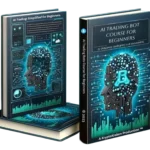
Overall, advanced AI techniques such as deep learning and natural language processing offer exciting opportunities to enhance the performance of AI trading bots. By leveraging these techniques, traders can gain valuable insights from vast amounts of data, make more accurate predictions, and ultimately improve their trading strategies.
Developing and Testing AI Trading Bots

Developing and testing your AI trading bot is a crucial step in ensuring its effectiveness and profitability. By backtesting your strategies using historical market data, you can evaluate the performance of your bot before deploying it in real-world scenarios. Many trading platforms offer backtesting functionalities, allowing you to simulate trades and assess the profitability of your strategies.
During the backtesting process, you can analyze various aspects of your AI trading bot’s performance. For example, you can examine its ability to identify profitable entry and exit points, its risk management capabilities, and its overall profitability over a specific time period. By conducting thorough backtesting, you can gain valuable insights into the strengths and weaknesses of your bot’s strategies.
While backtesting is essential, it’s also important to test your AI trading bot in real-time market conditions. Backtesting provides a historical perspective, but real-time testing allows you to observe how your bot performs in the current market environment. By deploying your bot on a demo account or with a small amount of capital, you can closely monitor its performance and make necessary adjustments.
Real-time testing provides an opportunity to assess how your bot reacts to market fluctuations, news events, and other factors that can impact trading decisions. By observing its behavior in real-time, you can identify any potential issues or areas for improvement. This iterative process of testing and optimization is crucial for fine-tuning your strategies and maximizing your profitability.
In addition to backtesting and real-time testing, it’s also important to consider the robustness of your AI trading bot. A robust bot is capable of adapting to changing market conditions and maintaining its performance over time. To ensure the robustness of your bot, you can perform stress testing by subjecting it to extreme market conditions or unexpected events.
Stress testing involves simulating scenarios such as market crashes, sudden price movements, or high volatility to evaluate how your bot responds. By stress testing your bot, you can identify any vulnerabilities or weaknesses in its strategies and make necessary adjustments to enhance its performance.
Furthermore, it’s crucial to continuously monitor and evaluate the performance of your AI trading bot even after it has been deployed in live trading. By regularly reviewing its performance metrics, such as profitability, risk-adjusted returns, and drawdowns, you can identify any deviations from your expected outcomes.
Continuous monitoring allows you to detect any potential issues or anomalies early on and take appropriate actions to mitigate risks. It also provides an opportunity to identify new market trends or patterns that can be incorporated into your bot’s strategies to improve its performance.
In conclusion, developing and testing AI trading bots involves a comprehensive process that includes backtesting, real-time testing, stress testing, and continuous monitoring. By diligently evaluating and optimizing your bot’s strategies, you can enhance its effectiveness and profitability in the dynamic world of financial markets.
AI Trading Bot Platforms and Tools
Building your own AI trading bot from scratch can be complex and time-consuming. Fortunately, there are several platforms and tools available that simplify the process. These platforms offer pre-built trading bot templates, backtesting capabilities, and integration with popular trading exchanges. By leveraging these tools, even beginners can quickly develop and deploy their AI trading bots.
Some popular AI trading bot platforms include 3commas and TradeSanta. These platforms provide user-friendly interfaces and comprehensive documentation, making it easy for beginners to get started.
Practical Project and Capstone Assignment
To solidify your understanding and skills in AI trading bots, it’s crucial to undertake a practical project. This project will allow you to apply your knowledge and showcase your capabilities in building and deploying a functional AI trading bot. The capstone assignment will assess your bot’s performance, evaluate its risk management strategies, and provide suggestions for optimization.
Building and Deploying a Functional AI Trading Bot
For the practical project, you will develop a fully functional AI trading bot that is capable of executing trades based on pre-defined strategies. Implementing the knowledge gained throughout this guide, you will configure your bot to monitor real-time market data, generate trade signals, and execute trades automatically. By building this bot, you’ll gain valuable hands-on experience in developing AI trading solutions.
Analyzing Performance and Making Improvements
Once your bot is deployed, it’s crucial to continuously monitor its performance and make improvements. Analyze its trading history, assess its profitability, and identify areas for optimization. By fine-tuning your bot’s strategies and risk management techniques, you can improve its performance and increase your chances of success in the markets.
FAQ: AI Trading Bots for Beginners
1. What are AI trading bots, and how do they work? AI trading bots are automated software that use artificial intelligence and machine learning to analyze market data and execute trades. They mimic human intelligence to identify patterns and make data-driven trading decisions.
2. Why is understanding AI and machine learning important for trading? AI and machine learning algorithms can process vast amounts of data and recognize complex market patterns, enabling more accurate and efficient trading strategies.
3. What basic trading concepts should I understand before using AI trading bots? It’s important to understand supply and demand, market trends, and risk management to make informed decisions and enhance your trading bot’s effectiveness.
4. Can AI trading bots replace human traders? While AI trading bots can automate and optimize trade execution, they cannot fully replace human judgment and understanding of market nuances.
5. How does technical analysis work in AI trading? Technical analysis involves evaluating past market data, like price and volume, to predict future movements. AI bots can automate this process but understanding these concepts is beneficial for fine-tuning strategies.
6. What programming knowledge is required for developing AI trading bots? Basic understanding of programming languages like Python or R is important. These languages offer libraries and frameworks ideal for trading applications.
7. What are some advanced AI techniques used in trading? Advanced techniques include deep learning for analyzing complex data sets and natural language processing for interpreting news and social media for market insights.
8. How important is backtesting in AI trading bot development? Backtesting, using historical market data, is crucial for evaluating a bot’s strategy before live deployment. It helps identify potential strengths and weaknesses.
9. What should I consider when testing AI trading bots in real-time markets? Monitor how your bot reacts to market changes, news events, and assess its performance for continuous improvement and strategy optimization.
10. Are there ready-made platforms for building AI trading bots? Yes, platforms like 3commas and TradeSanta offer pre-built templates and tools for easy development and deployment of AI trading bots.
11. What is the significance of a practical project in learning about AI trading bots? A practical project allows hands-on experience in building and optimizing a bot, applying learned concepts, and understanding real-world trading challenges.
12. Can beginners effectively use AI trading bots? Yes, with a solid understanding of trading fundamentals, basic programming, and AI concepts, even beginners can effectively use and benefit from AI trading bots.
Conclusion
AI trading bots offer beginners the opportunity to tap into the world of automated trading, harnessing the power of AI and machine learning. By developing a strong foundation in trading concepts, programming skills, and AI techniques, you can build and deploy your own AI trading bot. Through continuous testing, optimization, and monitoring, you can increase its performance and profitability. Embrace the power of AI trading bots, and embark on your journey to become a successful trader.




























